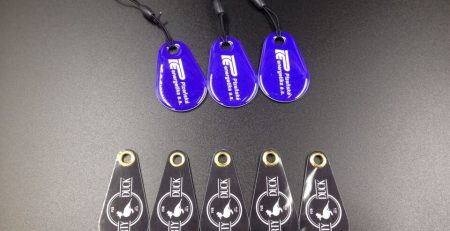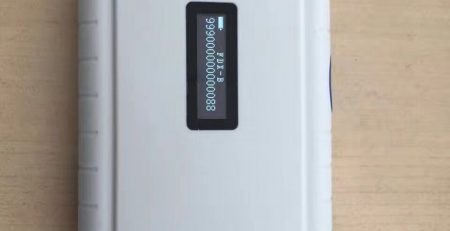Low frequency (LF) and high frequency (HF):
Low frequency (LF) and high frequency (HF) bands RFID tags generally
use the principle of electromagnetic coupling
The high frequency typical operating frequency is 13.56 MHz. The RF
tag in this band, because its working principle is exactly the same
as the low-frequency tag, that is, it works by inductive coupling,
so it should be classified as a low-frequency tag. On the other
hand, according to the general division of the radio frequency, its
operating frequency band is also called high frequency, so it is
often referred to as a high frequency tag.
Operating frequency: low frequency (125KHz), high frequency
(13.56MHz)
1. The reading distance of the low frequency tag can only be within
5 cm.
2. The low-frequency range is now mainly used in low-end technology
areas, such as automatic parking fees and vehicle management
systems.
3. Transferring data is slow.
4. The tag stores less data.
5. Low frequency electronic tags are poorly flexible and difficult
to identify.
6. The data transmission rate is low, and the electronic tag can be
read only one-to-one in a short time.
7. Only suitable for low speed, close range identification
applications.
8. Compared to UHF electronic tags, tag antennas are more numerous
and costly.
9. The read distance is small. When transmitting data between the
low frequency tag and the reader, the low frequency tag needs to
be located in the near field area radiated by the reader antenna.
The reading distance of the low frequency tag is generally less
than 8 cm.
10.Only one-to-one reading can be performed when reading electronic
tag data.
11.Handheld readers cannot upload data in real time when reading
electronic tags. You must connect to the computer via USB to
upload data to the background.
12. Handheld readers cannot query data in real time.
13. Most low frequencies are not writable.
14. Low-frequency electronic tags are poorly confidential and easy
to crack.
UHF RFID tags:
UHF tags are referred to as microwave radio frequency tags, and UHF
and microwave frequency bands generally use electromagnetic emission
principles.
*.Operating frequency: UHF (902MHz ~ 928MHz)
*.Protocol: EPC C1G2 (ISO 18000-6C)
*.Useable data: 240-bit EPC code
*.Tag identifier: (TID) 64 bit
*.Working mode: readable and writable
*.Antenna polarization: linear polarization
1. UHF tag read range can up to 10 meters.
2. UHF has a wide range of functions, and the most advanced IoT
technology uses UHF electronic tag technology.
3. Fast data transfer rate, single tag read rate of 170 sheets per
second per second (EPC C1G2 tag)
4. With a large stores data area
5. UHF tags are flexible and easily identifiable.
6. With a high data transfer rate, a large number of electronic tags
can be read in a short time.
7. Anti-collision mechanism, suitable for multi-tag reading,
single-time batch reading of multiple electronic tags.
8. The antennas of UHF tags are generally strips and labels. The
antenna is available in both linear and circular polarization to
meet the needs of different applications.
9. Data retention time > 10 years.
10. Handheld readers can read and write UHF tags.
11. Handheld readers allow batch operation of UHF electronic tags.
12. Handheld reader with CE operating system, when reading UHF
electronic tag data, it can be uploaded to the back-end database
in real time via WIFI and GPRS.
13. The handheld reader is equivalent to a PDA computer. By reading
the UHF electronic tag data, the reader can complete the reading
and writing operations, and the tag data can be instantly
queried in the handheld reader. (such as manufacturer
information, production batch number, production date, etc.)
14. UHF electronic tags have a unique ID number in the world, which
is safe and confidential and difficult to crack.
15. Intelligent control; high reliability, high confidentiality;
easy to operate; convenient for query
STARNFC supplies LF,HF and UHF tags in various shapes and made in
different materials meet for many RFID applications. We are
proffestional RFID tags manufacturers for more than one decades. If
you need any Passive RFID tags , please contact us: info@starnfc.com



